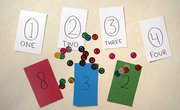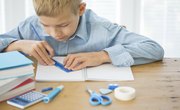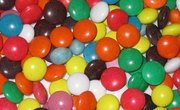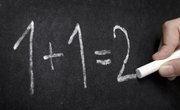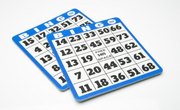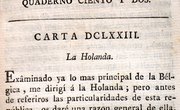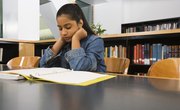Probability projects in math means bringing out the dice, the spinners and the playing cards. These tools are all ways to determine the possible occurrence of a future event, compared to the chance of its nonoccurence--or probability--according to John Van De Walle, "Teaching Elementary and Middle School Mathematics." Probability chances are categorized as impossible, less likely, equally likely, more likely or certain. One thing for certain, with chance and carnival-like tools, it is sure to be exciting. (Reference 1)
Is It Likely?
"Is It Likely?" presents an early concept of chance to explore with the primary grades. Hand out cards with different chances listed on the cards. Write certain, impossible and maybe on three different cards. Giving each of the cards a different color makes it easy to assess as you call out the questions to the children. Instruct the students to hold up the correct card to answer the "Is It Likely?" question. Ask questions, one at at time, that can be answered by certain, impossible or maybe. Sample questions include: Will the sun come up tomorrow? Will I go to bed before midnight? Will my mom meet the bus today? Will I have two birthdays this year?
Students hold up the proper card with each question you asked. For upper elementary students, add more answers for them to consider, such as impossible, less likely, equally likely, more likely or certain. (Reference 1)
Who Will Win?
Play simple games where the chance of one team winning is higher than the other team. Play the horse race game. Twelve horses compete to cross the finish line first. Students keep track of the horses' moves on a game board with the first column numbered one to 12 to represent the 12 horses. The game card has six spots lined up horizontally, to get to the finish line of the racecourse. Give the students a bean for them to move each time their horse's number is rolled. Students choose a horse--or number--to call their own.
Use two dice to move your horse. Move each horse when the sum of the two dice rolled equals the horse's number. For example, if a four and a one are rolled, horse number five will move one spot closer to the finish line. Horse number seven has the highest probability of winning because there are six ways to roll the dice to equal seven. Horse number one will never leave the stall because there is no way to roll a one with two dice. Students exchange ideas about why their horse didn't win. (Reference 2)
Random Numbers
From a basic concept of certain, impossible and maybe, students in upper elementary grades can begin to predict specific ratios. Hand out spinners with unequal sectors. Have the students predict the ratio of landing on the colored sections using language like, "45 out of 100 times the spinner will land on red." Have the students test their predictions by conducting the experiment. Ask the students to spin the spinner 10 times. They see if their prediction is correct, after the first 10 spins. After twirling the spinner 50 times students recheck their prediction. If time permits, have them spin it 100 times. The probability ratio will match the actual size of the spinner's sector the more times the spinner is spun. (Reference 3)
Compound Experiments
Compound experiments involving probability require more than one independent activity, like drawing a card and rotating a spinner. One activity has no impact on the other one. To record the results, use a chart that keeps the independent events separate and shows all of the outcomes. A tree diagram is a good choice, showing all of the outcomes branching out from the two independent events. Some examples of more than one independent activity include rolling two different-colored dice, having a cup and a tack to throw up, tossing four coins or spinning two different spinners. The activities are similar to other probability activities. Make a prediction, do the experiment and record the results. (Reference 1)
Related Articles
References
Writer Bio
Susan Rickey started writing in 1994 with a technology feature article for the "Pioneer Press." She was the writer of the Klamath Forest Alliance newsletter, an environmental organization. Rickey obtained her teaching credential from California State University and acquired her Bachelor of Science from the University of Arkansas.



